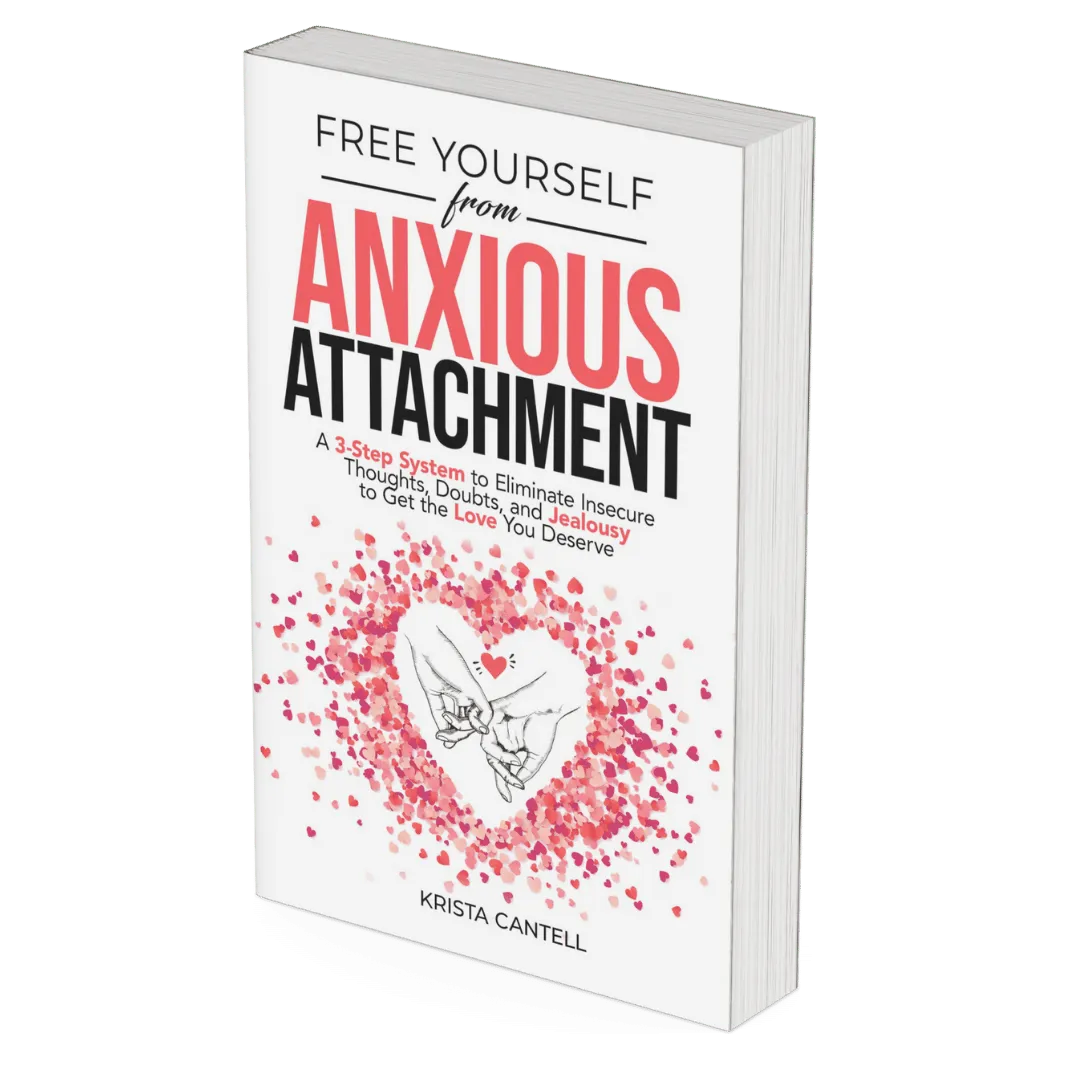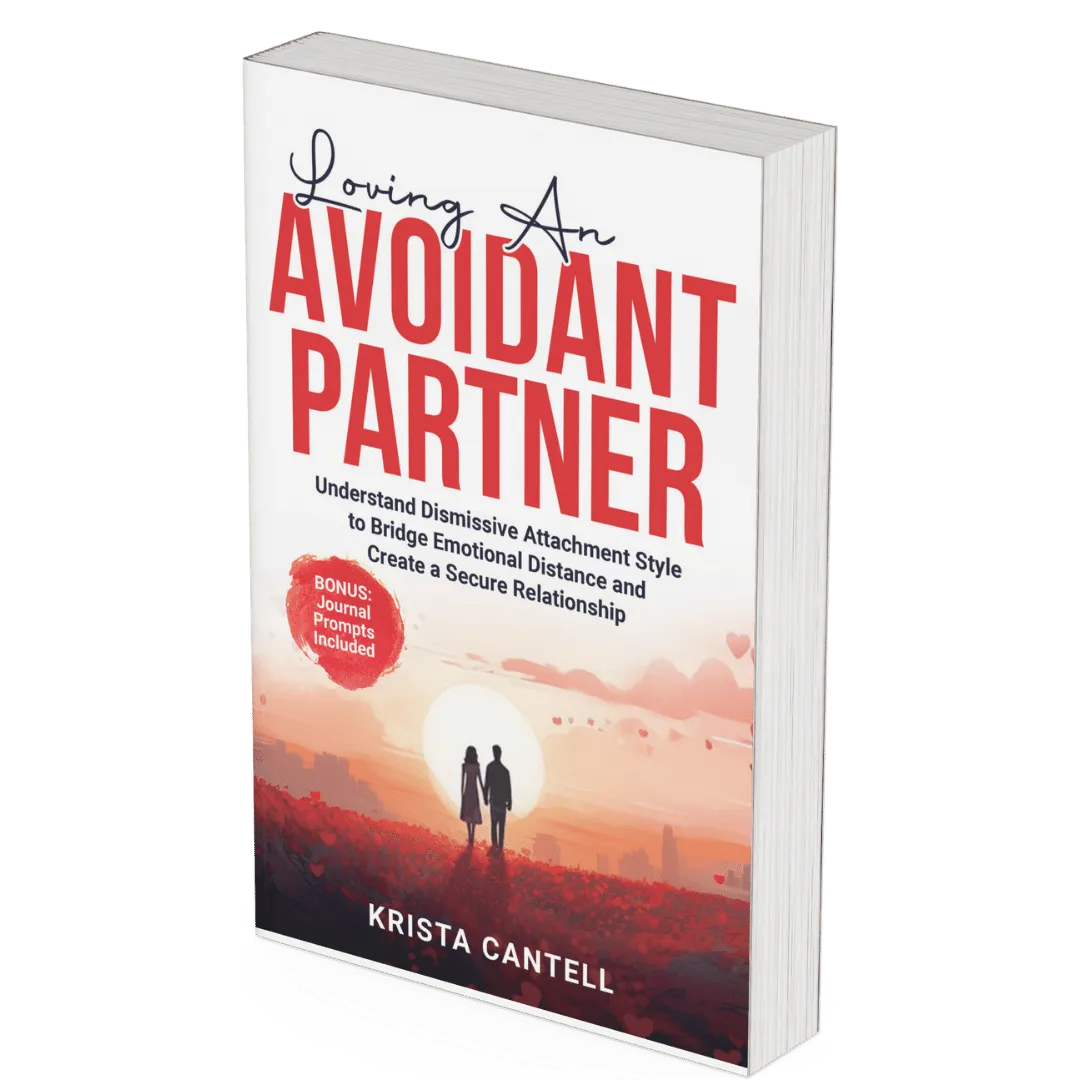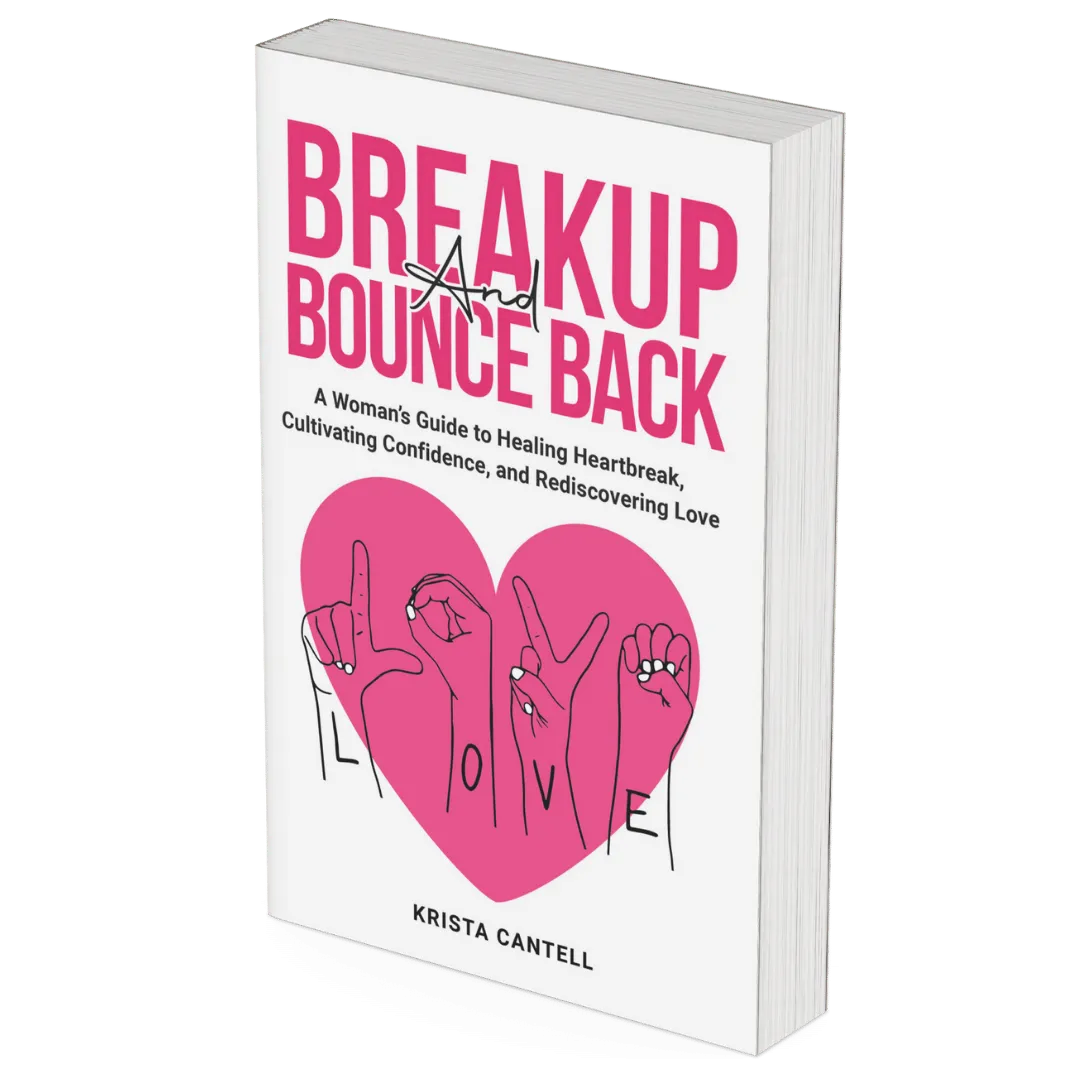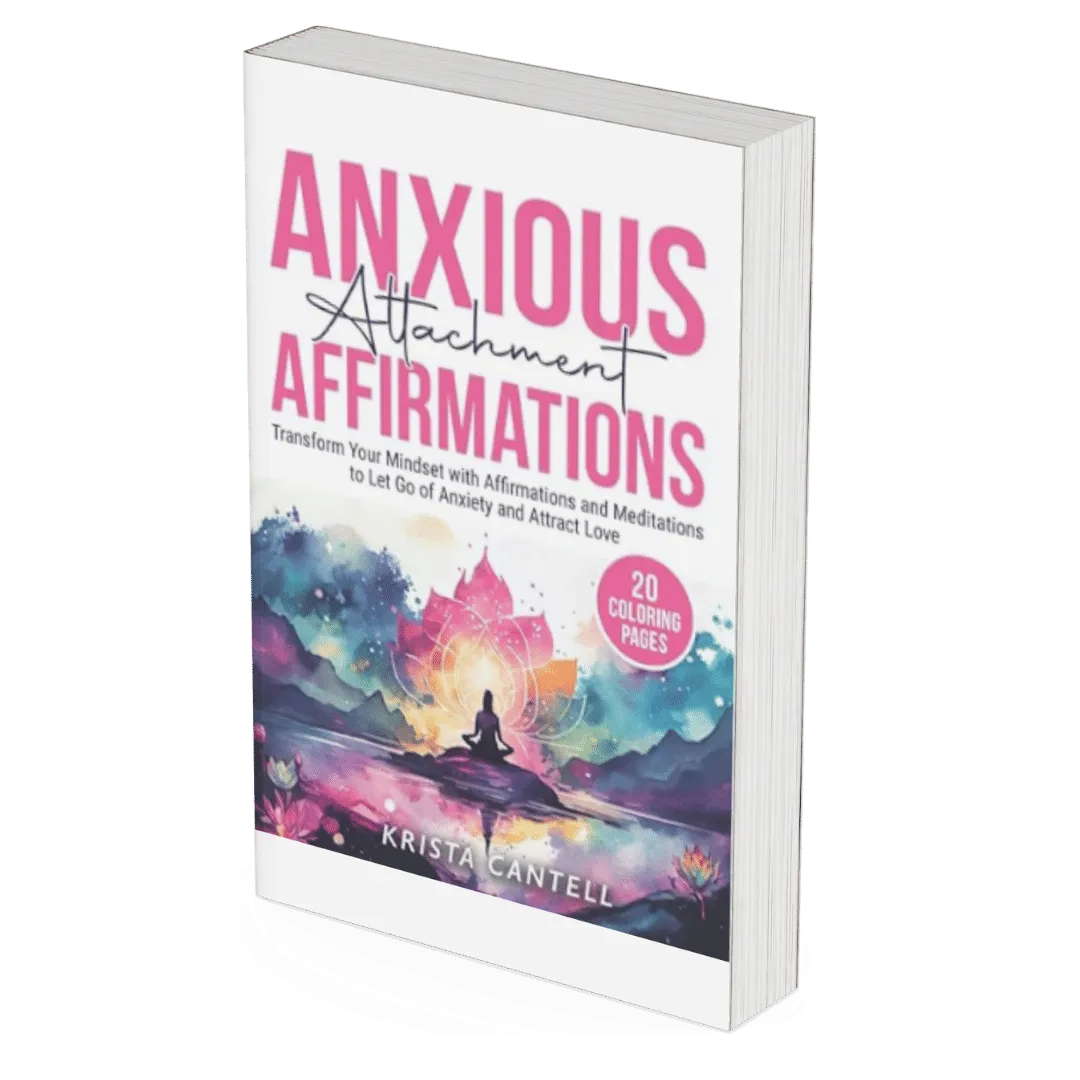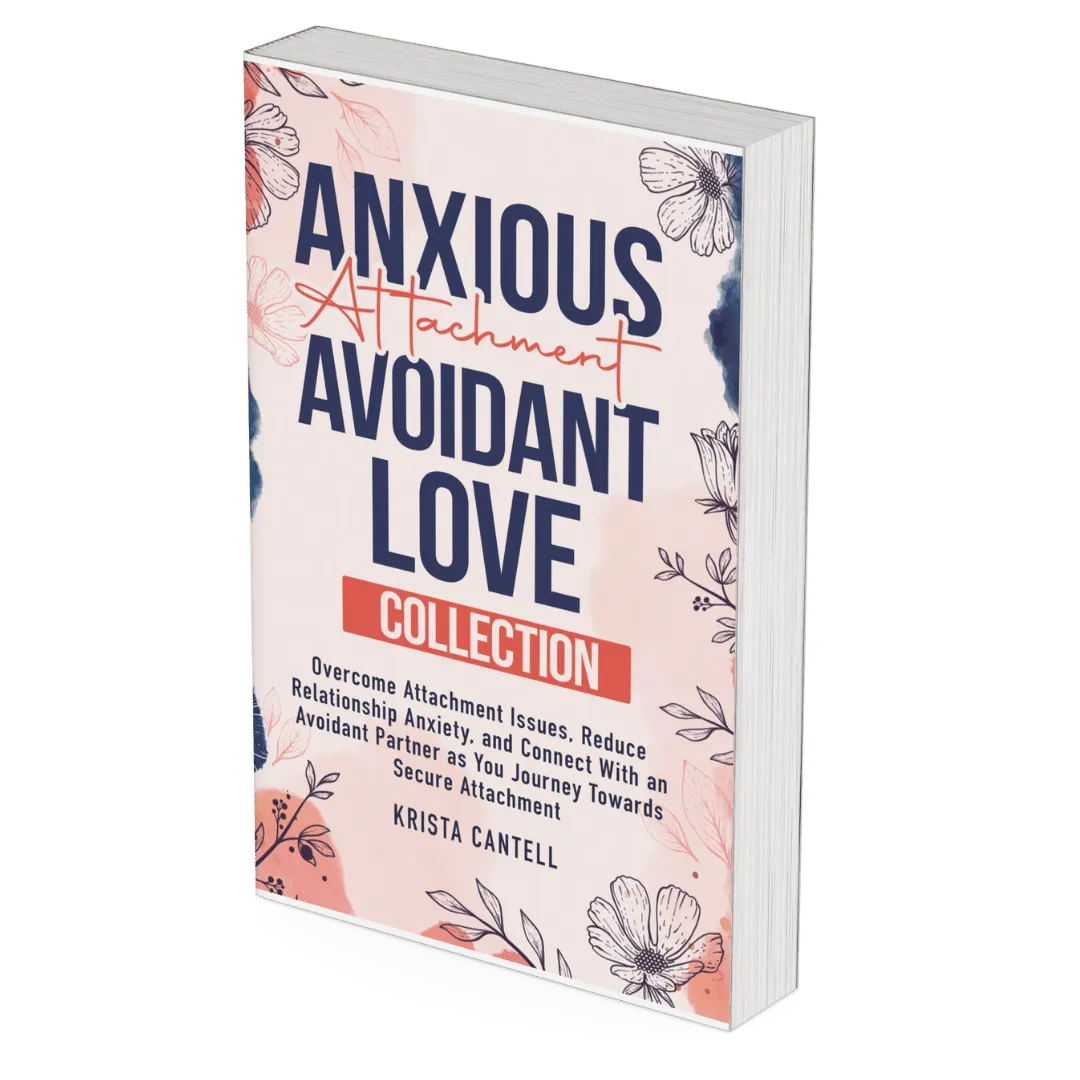Empowering Connections and Transforming Love
Attachment Theory Books for Lasting Love
Dive into our carefully curated selection of transformative books, enriching courses, and expert therapist recommendations, all designed to empower you with the knowledge and tools to build deeper, more fulfilling connections. Whether you're seeking to understand your relationship patterns, improve communication with your partner, or simply enrich your personal growth journey, Attachment Theory Books is here to light the way. Start your journey towards stronger, healthier relationships today!
FEATURED ATTACHMENT BOOKS THIS MONTH
Transform Your Love Life
Transform Your Love Life by embracing a secure attachment style with your partner. Discover the essence of enduring love through attachment theory, fostering deeper empathy, trust, and emotional connection. Our resources offer insights and practical tools to help you and your partner grow together, strengthening your bond. Whether starting anew or enriching an existing relationship, a secure attachment approach leads to a more fulfilling, loving partnership. Start your transformative journey with us and elevate the quality of your relationship.

Attachment Theory Books & Resources

Attachment Book Recommendations
Explore the transformative world of attachment theory with our handpicked book recommendations. Start your self-help journey with us, and unlock the secrets to a more fulfilling love life through the power of knowledge and self-discovery.
Connect with Therapists
Connect with the right support on your journey to healthier relationships. We offer easy access to a network of therapists specializing in attachment theory. Find the perfect match for your unique needs and start working towards a more secure, fulfilling partnership with expert guidance.

From The Attachment Theory Books Blog

Understanding The Fearful Avoidant Attachment Style
Attachment theory, developed by British psychologist John Bowlby, has significantly influenced our understanding of human development and interpersonal dynamics. Among the various attachment styles outlined within this theory, the fearful avoidant attachment style stands out for its complex traits and behaviors. Individuals with this attachment style typically experience a strong ambivalence in close relationships, striving for connection yet fearing intimacy and the potential for hurt. This inner conflict often leads to a push-pull dynamic that can confuse both the individual and their close contacts.
Recognizing the fearful avoidant attachment style is crucial because it influences how a person navigates their emotions and behavior patterns within relationships. These individuals might oscillate between extremes—sometimes seeking closeness ardently, other times withdrawing abruptly. The inconsistency with which they react to emotional intimacy can be rooted in previous negative relational experiences and could lead to challenges in forming stable, secure bonds with others.
Key Takeaways to Understanding Fearful Avoidant Attachment Style
Fearful avoidant attachment is characterized by a desire for closeness paired with a fear of intimacy.
This attachment style can lead to a cycle of conflicting behaviors that affect relationship stability.
Understanding and addressing the underlying issues of fearful avoidant attachment can promote personal growth and healthier relationships.
Fundamentals of Fearful Avoidant Attachment
Fearful avoidant attachment, a complex interpersonal relationship pattern, embodies a paradoxical mix of anxious and avoidant attitudes that implicate an individual's history and deeply influence their interactions.
Defining Fearful Avoidant Attachment Style
Fearful avoidant attachment is characterized by a simultaneous desire for closeness and intimacy with a significant fear of getting hurt, leading to a push-pull dynamic in relationships. Those with this attachment style desire love and connection but are often reluctant to become close to others due to a deep-seated belief that they will be let down.
Historical Context and Attachment Theory
Developed by John Bowlby in the mid-20th century, attachment theory proposes that children's early relationships with caregivers shape their future emotional and relational landscape. Bowlby identified secure attachment as a healthy, responsive bond, while insecure attachment, which encompasses avoidant and anxious styles, results from inconsistent or neglectful care. Fearful avoidant attachment is considered an insecure style, reflecting both anxious and avoidant tendencies.
Characteristics of a Fearful Avoidant Attachment Style
Individuals with a fearful avoidant attachment often exhibit a complex set of traits:
Anxiety: Concern over abandonment and doubts about self-worth.
Avoidance: A defense mechanism against anticipated pain.
Relationship Struggle: Whilst they crave connection, they also fear being too close to others.
Mixed Signals: Their behavior can be confusing to partners due to alternating between closeness and distance.
They may engage in relationships with a secure attachment style partner to mitigate anxiety, yet their intrinsic fear instigates avoidant behavior—creating a cycle that hinders stable connection with caregivers, romantic partners, and even their own children.
Impact on Personal Relationships
The fearful avoidant attachment style influences how individuals engage with others, often creating a complex interplay of desire for closeness and fear of intimacy. These patterns significantly affect various types of relationships.
Romantic Relationships and Intimacy
Individuals with a fearful avoidant attachment style experience a tense balancing act. On one hand, they crave emotional closeness and intimacy in their romantic partnerships. On the other, they harbor a deep fear of rejection and are wary of fully committing. These conflicting desires can lead to a pattern of swings between intense closeness and painful distancing, making stable commitment difficult to maintain. Trust, often tenuously established, can be quickly undermined by perceived threats of abandonment.
Intimacy: Desire for closeness coupled with fear of getting too close
Trust: Often fragile due to fears of abandonment or rejection
Commitment: Difficult to maintain due to opposing emotions
Friendships and Social Connections
When it comes to friendships and broader social connections, individuals with fearful avoidant attachment may struggle to form trustworthy bonds. They can be social and engaging, but this is tempered by a hesitancy to allow relationships to deepen. Conflict within these connections can prompt withdrawal and avoidance, reinforcing the cycle of distancing.
Closeness in Friendships: Yearned for, yet often sabotaged by own actions
Social Trust: Can be superficial as deeper trust requires vulnerability
Avoidance: Common response to conflict or perceived threats of rejection
Family Dynamics and Childhood Influence
Early experiences with neglect, trauma, or inconsistent caregiving can lay the groundwork for fearful avoidant attachment style. In family dynamics, these individuals may show ambivalence, craving family connection while simultaneously bracing for potential hurt. They may exhibit heightened sensitivity to family conflicts or signs of neglect, which can result in strained familial relationships.
Childhood Trauma: Often a significant factor in developing fearful avoidant attachment
Family Connection: Desired, but complicated by past hurts and fear of future trauma
Conflict Sensitivity: Family conflicts can trigger intense reactions and further avoidance
The impact of fearful avoidant attachment style extends through the spectrum of personal relationships, from the closest romantic bonds to broader social networks and foundational family interactions. Understanding these patterns can be the first step toward addressing the challenges they present.
In navigating the emotional terrain of those with a fearful-avoidant attachment style, recognizing behavioral patterns and understanding their emotional underpinnings are key. These individuals often experience a complex blend of desire for closeness and fear of intimacy, leading to mixed signals and uncertainty in relationships.
Understanding Triggers and Reactions with A Fearful Avoidant Attachment Style
Individuals with a fearful-avoidant attachment style may have certain triggers that evoke strong emotional responses. These triggers could include perceived threats of abandonment or signs of rejection, often stemming from past trauma or insecurity. When triggered, reactions can manifest as a combination of anxiety and avoidance behaviors, including withdrawal or emotional outbursts.
Common Triggers:
Lack of reassurance from loved ones
Emotional distance from partners
Intense interpersonal conflicts
Typical Reactions:
Anxiety: Rapid heartbeat, restlessness, and overwhelming worry.
Avoidance: Withdrawing from social interactions or potential emotional intimacy.
Identifying these triggers and reacting appropriately is crucial. Rather than acting on the immediate emotional response, which might include pushing others away or internalizing distress, acknowledgment of the trigger can lead to healthier coping mechanisms.
Communication and Expressing Needs
Effective communication is essential for individuals with a fearful-avoidant attachment style to express their needs and boundaries clearly. They often struggle with articulating their emotional needs, which is fundamental in achieving a balance between closeness and personal space in relationships. The goal is to navigate this conversation without inciting the fear of vulnerability or distrust.
Strategies for Communication:
Use "I" statements to express feelings without placing blame.
Seek validation for feelings while also validating the feelings of others.
Developing self-awareness about how to communicate affection and when to express vulnerability can mitigate misunderstandings and help build trusting relationships.
Coping with Anxiety and Avoidance
For those with a fearful-avoidant attachment style, coping with anxiety and avoidance can be particularly challenging. They may sabotage relationships out of fear or unknowingly send mixed signals to their partners. Devising strategies to manage these tendencies is important for establishing stability and emotional intimacy.
Coping Mechanisms:
Mindfulness and meditation to remain grounded during anxious episodes.
Establishing consistent routines for reassurance and to build trust within oneself.
Confronting the discomfort of handling depression, seeking reassurance, and allowing for affection are also part of the coping process. It involves a delicate balance of recognizing the desire for closeness while confronting the impulse to withdraw due to fear of emotional pain.
Approaches to Healing and Personal Growth
In understanding the fearful avoidant attachment style, it is crucial to recognize actionable strategies for individuals to heal and grow personally. These approaches focus on developing healthier attachment patterns, improving self-regulation, and building self-esteem.
Therapy and Professional Support
Professional support, such as therapy, can assist individuals in processing their childhood experiencesand emotional relationships that contribute to their fearful avoidant attachment style. Therapists might employ modalities tailored to attachment issues, including:
Cognitive-behavioral Therapy (CBT): It identifies and challenges negative thought patterns about oneself and others.
Dialectical Behavior Therapy (DBT): Provides skills in mindfulness and emotional regulation.
Schema Therapy: Works on identifying and reshaping the deep-rooted patterns from one's past.
A therapist serves as a supportive figure, helping to establish a model of trust that didn't form in early life, which could mitigate patterns of emotional dysregulation and anxious attachment.
Building Secure Attachment Patterns
Individuals can learn to develop secure attachment patterns through consistent and conscious effort by:
Recognizing patterns of sabotaging relationships.
Understanding their emotional and physical needs.
Practicing open and honest communication.
Mindfully observing behaviors in real-time to prevent defaulting to preoccupied attachmentresponse.
One striving for secure attachment learns to value themselves (improve their model of self), trust others (enhance their model of others), and seek out partners who are responsive and reliable.
Fostering Self-Esteem and Self-Regulation
Enhancing self-esteem is pivotal for those with fearful avoidant attachment as they often feel unworthy of love and carry deep-seated insecurities. Strategies include:
Celebrating small achievements.
Engaging in affirmative self-talk.
Establishing personal boundaries in relationships.
Self-regulation is another critical aspect, where people can employ techniques such as deep-breathing exercises and meditation to manage emotional responses. Doing so allows for emotional steadiness, which cultivates a sense of control and aids in the pursuit of healthier relationships and a more stable adult attachment style.
FAQs About The Fearful Avoidant Attachment Style
To effectively understand fearful avoidant attachment, it's essential to explore common questions on the subject.
How can one identify signs of a fearful avoidant attachment style in adults?
Adults with fearful avoidant attachment often display a mix of anxious and avoidant behaviors. They may seek closeness but fear intimacy, leading to a push-and-pull dynamic in relationships.
What strategies are effective in managing fearful avoidant attachment?
Strategies such as therapy, consistent communication, and building trust can be effective in managing fearful avoidant attachment. Individuals may benefit from exploring past traumas and learning healthier ways to connect with others.
Can you recommend literature that focuses on fearful avoidant attachment patterns?
Books like "Attached: The New Science of Adult Attachment and How It Can Help You Find – and Keep – Love" by Amir Levine and Rachel Heller provide insights into different attachment styles, including fearful avoidant attachment.
What are the primary differences between anxious-avoidant and fearful avoidant attachment styles?
While both styles involve insecurity in relationships, anxious-avoidant individuals often crave closeness and fear rejection, whereas fearful avoidant individuals desire intimacy but struggle to trust and rely on partners.
What childhood experiences typically contribute to the development of fearful avoidant attachment?
Childhood experiences of inconsistent parenting, trauma, or caregiver neglect can contribute to the development of fearful avoidant attachment. Children learn to fear abandonment yet also fear getting too close to others.
In relationships, what type of partners are individuals with fearful avoidant attachment often drawn towards?
Individuals with fearful avoidant attachment may be drawn to partners who confirm their fears about reliability and trust, often leading to tumultuous relationships with other insecurely attached individuals.
Our Service

Attachment Books
Explore the transformative world of attachment theory with our handpicked book recommendations. Start your self-help journey with us, and unlock the secrets to a more fulfilling love life through the power of knowledge and self-discovery.
Therapist Connect
Connect with the right support on your journey to healthier relationships. We offer easy access to a network of therapists specializing in attachment theory. Find the perfect match for your unique needs and start working towards a more secure, fulfilling partnership with expert guidance.


